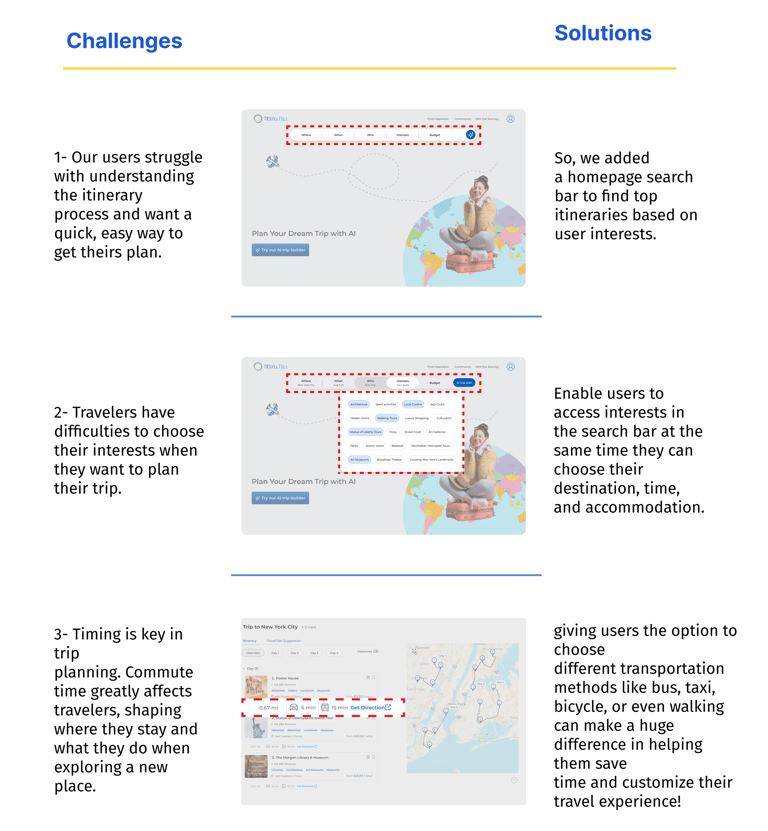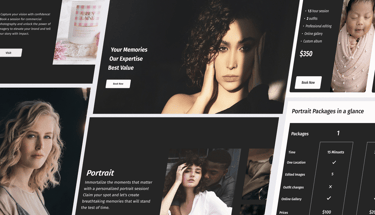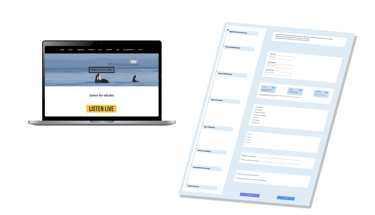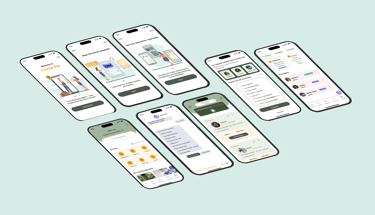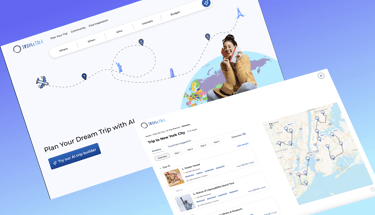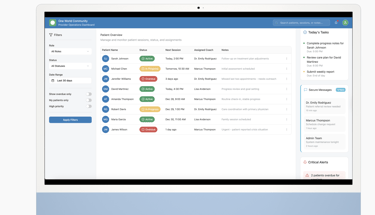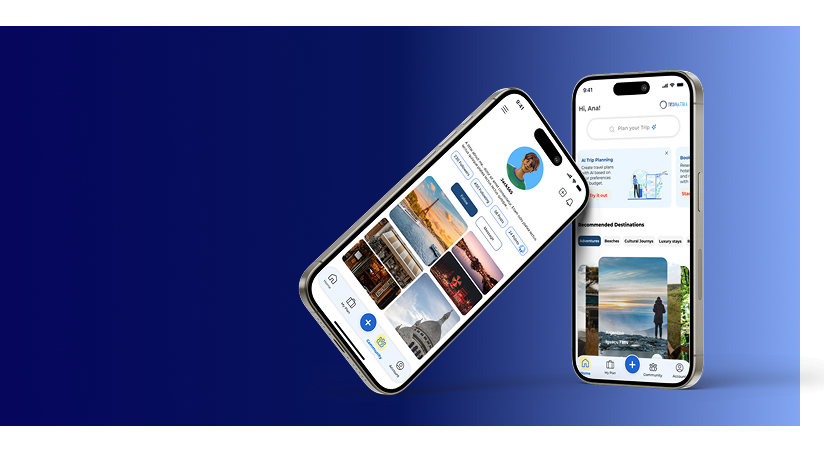

Travel Tale AI
A short story about how we learned about AI and how to design it in a trip planning platform.
My Role:
UX/UI Designer
Team:
Gloshid Y (Leader)
Shabi A (UX Manager)
Arezo G (UX Designer)
Sara M(UX Designer)
Tools Used:
Figma
Figjam
Canva
Zoom
Usability Testing
Maze
AI Trip Planner is a travel tool that, with the help of AI, creates personalized itineraries based on users’ preferences, including budget, destination, timing, and companions. It offers tailored suggestions for places to visit, stay, and eat, while providing real-time traffic updates via Google Maps. Users can easily adjust their plans, download them offline, and engage with a community to share their experiences. This sharing builds trust and inspires others, turning everyday users into contributors who shape the platform’s future.
Project Overview
Challenges
Many users prefer to rely on other people’s recommendations over AI-generated plans, so we needed to gain their trust.
Planning trips can be time-consuming, and users may become overwhelmed with excessive information. We must design the platform to help them overcome this challenge using AI.
Choosing the best commuting method can often be confusing, making efficient planning more difficult.
In our survey results, we found that users struggle to keep track of their expenses while traveling.
Process
We ran a double Diamond method based on the Design Thinking Methodology. It was not a linear path; we bounced between stages as the project progressed.
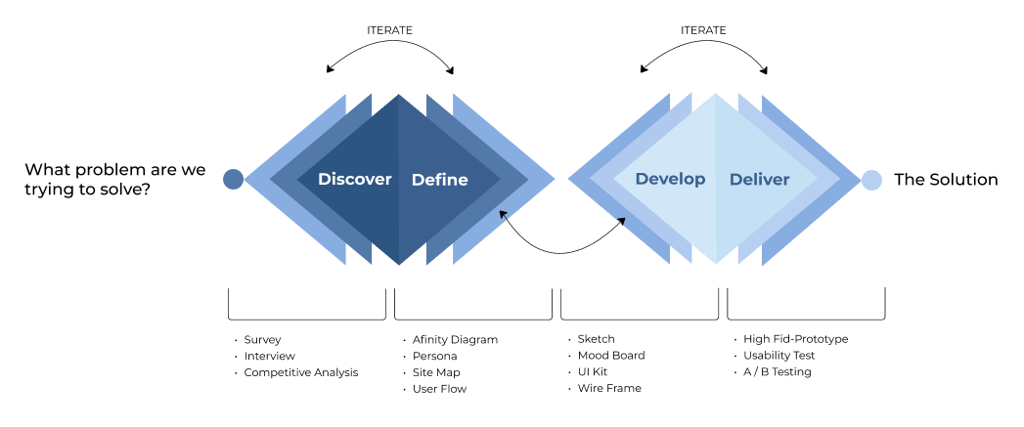

Discover
To understand users and problems, the following steps have been taken.
Surveys
Interviews
Competitive Analysis
Survey
We ran a survey to learn more about our users, their needs, and their challenges. We included people of different ages and backgrounds.
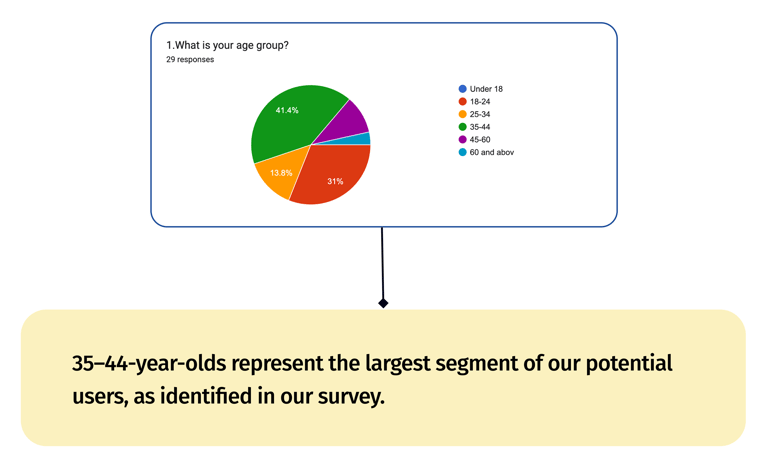

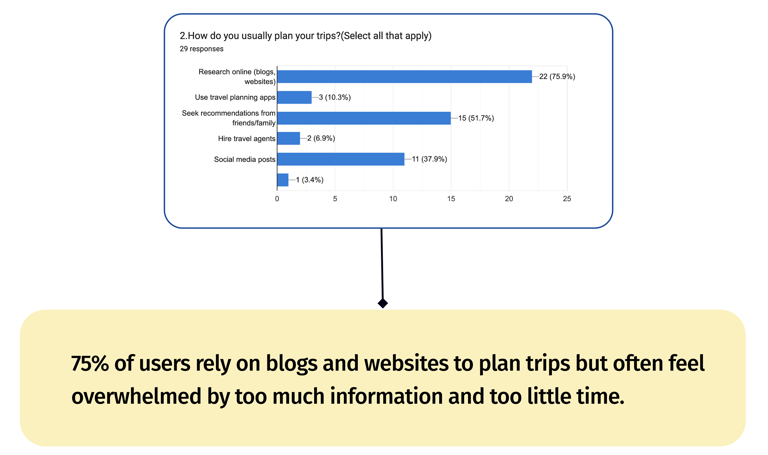

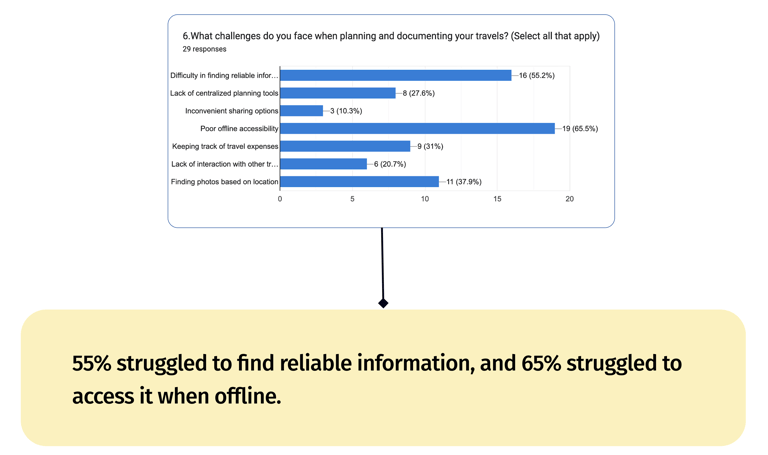

Interview & Afinity Diagram
After the survey, we interviewed 7 participants to gain deeper insights into their pain points, focusing on improving travel scheduling through a powerful AI search engine.
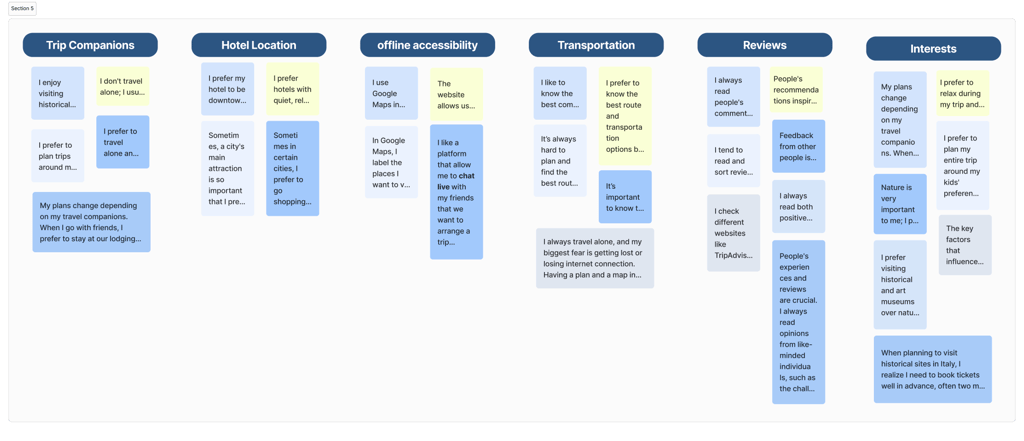

Outcome:
Travelers want to choose the best way of transportation to save their time.
Choosing the right location saves time and makes trips more enjoyable by staying near attractions, dining, and transport.
Offline access keeps you prepared without an internet connection, lowering travel stress.
Reviews help travelers plan better by offering valuable insights for informed choices.
Competitive Analysis
That’s a thorough approach to competitive analysis! By examining platforms like Tripadvisor and Wanderlog, you can gain insights into how they utilize AI for trip suggestions, which can inform your own recommendation algorithms. Analyzing Google Maps and Google Trips for route and commute optimization is also key, as it helps you understand how to streamline travel planning.


Define
At the define stage, we identified our main challenges and explored solutions. We created persona, a site map, and user flow based on the data collected during the discovery stage.
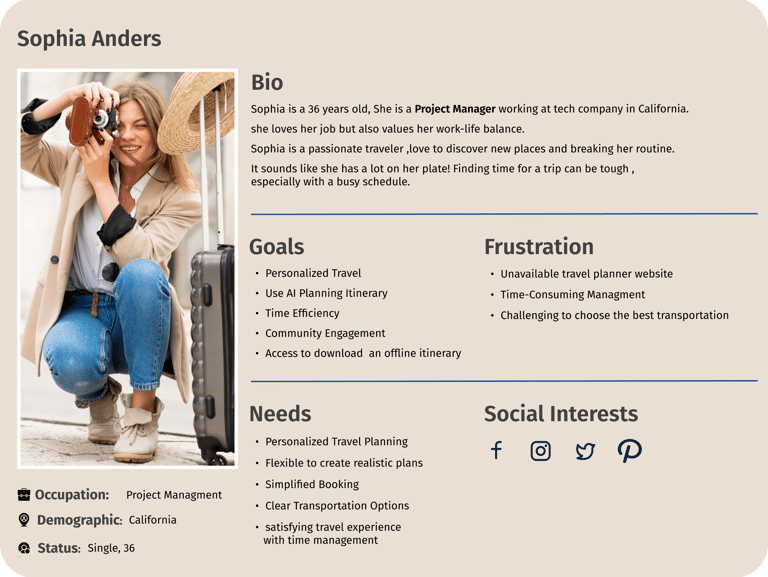

Persona
The insights we gained from surveys and interviews helped shape the persona. Sophia's main goal is to find a trustworthy, personalized travel plan for a short-term local travel experience to save time.
Site map
We first made the information structure using card sorting. After user testing and looking at competitors, we updated it several times.
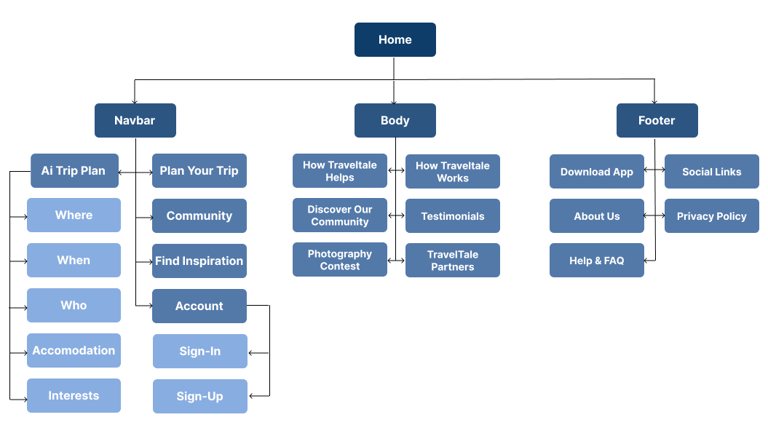

User Flow
In the user flow, we aim to show how the user selects a hotel and adds it to their plan to create a personalized itinerary powered by AI.

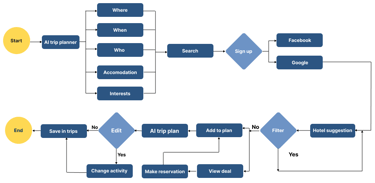
Develop
After analyzing our research data and understanding user needs, we created clear solutions to address their concerns and included them in our design. Below are some of our solutions
